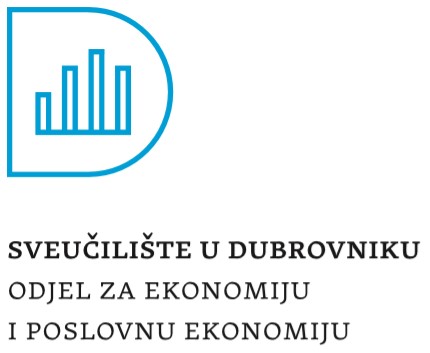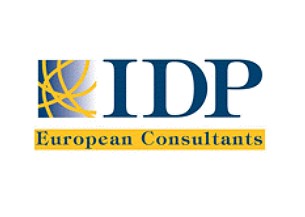|
Design and Creation of a Website
Our showcase on the InternetClick to read 
-
It is nothing new that websites are one of the most important tools when making your business known on the Internet. Our webpage allows users to access all kind of information anywhere at any time of the day, so it is important to make it useful and efficient.

If we find a store on the street, the first thing we will notice will be its showcase.
If we find them dirty, unorganised and products are neglected, we will not even dare to enter. On the Internet, this works the same way. An unorganised website, difficult to use and unreliable, will not gain visibility and will not attract potential customer to sell its products.
Preparation Click to read 
-
Before we start designing a website, we must stop to think carefully. It must not be an arbitrary process, as our page may not work out if we do not make the right decisions. Moreover, this needs a research process, frequently leaded by professionals in the area.
If we already have an enterprise or a business, we must respect our image and make our physical and online business as similar as possible. If we start from scratch, we must carry out the branding. It is the process and practice of strategies to create the brand for an enterprise or product. To sum up, we must gather the values of our company, be reliable and look for a unique identity that differences us from the competence. 
Take into account the main goals of your website, and what you can do to achieve them. Define them and set a long-term plan. Keep the features and the public of your company in mind, as they will establish a lot of criteria when making decisions. This will be your strategy.
For example, a website that sells toys for children cannot be developed the same way as a website about online positioning. The services, customers and goals are not the same, therefore, they need different design and functionalities.
ContentsClick to read 
It is necessary to define the contents of our webpage, how we will structure them, which languages we will use…

When writing, it is recommended short paragraphs, avoiding excessive technicisms, so we can keep the reader’s attention.
If we include keywords that refer to our business, we will improve our positioning, and therefore, better visibility.
If there is a type of content that interests your users, do not be afraid to include it.
Remember to include NAP: Name, Address and Phone Number.
Design and ImageClick to read 
A picture is worth a thousand words, so it is necessary to make a good first impression.
First of all, we will make an “sketch”, where we will organise our webpage and depict how we would like it to be, with photomontages that allow us to get an idea of how it will look like. This is called “Mock Up”, and offers the first design of the website.
Then, we can make the “Wireframe”, which is a visual prototype that exposes the website structure: menus, contents, images… Take into account that the webpage must be easy to use and effective.
All the design must follow the graphic line of the enterprise (logotype, colours, slogan…); otherwise, the user will not relate the page with the enterprise.
Take into account your own public, their interests and their profile. Develop a usable platform (responsive design allows to adapt the visualisation to the device we access from). If you are having trouble with this task, you can always contact professionals.

Following these steps, you will have developed idea of the image that your website will have. Here there are some tips for web design:
-Brainstorming and mind map are very useful tools for planning your website. Try to inspire on webs you like, so a research and find how its design works and what you like about them.
-Create an excel where you gather the information of every page of your website: title, contents, keywords…
-Respecting to the design, use light colours for the background and dark colours that contrast with it. Do not use an excessive number of fonts, icons or images, and make sure to use high quality images. Make all pages homogenic, in the same graphic line for a more professional look. Responsive design is essential for getting to the greatest number of users as possible.
Remember to include the logotype, or any element that allows to recognise your enterprise (corporate colours, motto…)
ImplementationClick to read 
It consists on giving life to the own webpage. Depending on the complexity of your project you may need web programmers that help you with this task. But remember, once you’ve picked a theme design or you have an idea of which sections would you like to launch.
You need to understand the psychology of people landing on your website and they have two questions:
- Is this for me? Or not?
If yes, they are going to stay on your website in the very first 3 minutes. They are not going to scroll the contents or the sections for longer time.
That’s why the homepage of your website should be designed to answer to that question.
Let’s look at this website for example:

Within 3-5 seconds users will answer to their question and if they are looking for a handyman that’s perfect.
If they are looking for an electrician they may click back and click on the next website.
Let’s now look at another example:

This is a very professional website but this not convey a one-on-one message so if you are a business coach or a start-up the message you are trying to covey is not clear:
So those question are 100% visual. The text that you have is important but not as important as the image.
The second question is ‘Can I trust you?’ Are you trustworthy or not? That’s why your website should be professionally built. It should also include testimonials. If you have people of even managers of a company who is saying nice things about you, you should ask them not only to write a comment but also their name, surname and an image.

This actually adds to its trustworthiness, otherwise it could be considered a fake name or a questionable testimonial.
Before anything else, there are other things you need to have handy with you in order to speed up with your website creation:
- A logo in High Resolution and High Definition
- Contents ready
- Site map (home- who we are- services- news- contacts)
- Traffic stasts (install google analytics on your website. It will let you know how many people, percentage of women or man, age group visit your website daily, monthly, yearly.
Having those two questions which are ‘is this for me?’ and ‘can I trust you?’, you are ready to start creating your website.
WordPress is one of the best pages on website creation. It is perfect for those without technical knowledge on programming, ideal for beginners. WordPress allows you to upload contents, manage your webpage and take care of your image in your online showcase.
To help you create a website, we can follow this tutorial:
- Step 1: Choose a hosting.
In order to create your website, you need to choose a website hosting service. With this, you rent a space to stock all the information, images, videos or any other content accessible via web. For a hosting to use the functions of web access by browsers, it must be associated with a domain. When contrasting different hosting, you must consult prices, opinions and services (neither the most expensive are the best, nor the cheapest the worst. Check and contrast).
- Step 2: Install WordPress in your hosting.
The major part of hosting allows WordPress installation automatically. Go to the control panel of your server and there you can find automatic installation on most hosting. In case you cannot install it automatically, you can always do it manually: download wordpress.org, access to the file manager of your hosting and select the domain where you want it to be installed.
- Step 3: Create a database.
You will need a database to store your web contents, configurations, access data… Go to the management panel of your hosting, go to MySQL, Database. Choose a name for your database (choose a random succession of numbers and letters) and click Create Database.
- Step 4: Create a user and add it to the database.
Create a user assigned to the database, allowing all privileges. Give it a secure name and password. Go to “add users to database” and link them. Then, write your domain URL followed with “/wp-admin”. Fill the required information, and then enter the user and password. Finish running the installation.
Done! WordPress is now installed.
You can now access the lateral panel, that offers option for publishing contents and posts, installing templates, download different plug-ins… Explore the panel and discover all its possibilities.
Create your page as you like, and update it whenever you like.
We highly recommend to build your own website with WORDPRESS as it is very easy- manageable and user-friendly without knowing any programming or coding.
To complete its installation, from your dashboard (see picture below) you have to install new theme from the drop-down menu, edit the heading text, insert new posts, new images.
The content and structure you choose for your website must take into account three extremely important criteria, namely: usability, user-friendliness and accessibility.

It is important that your website is constantly updated and lively, otherwise people will think that your new enterprise is not really ‘living’. In this sense, it is useful to include a news & agenda section where you can upload news about your activities and services.
TestingClick to read 
Before we publish our website, it is necessary to check that everything works well, to avoid making a bad impression, as users may find these errors.
Pretend to be a user that does not know how your page works, and try to find specific contents. You can ask people you know to test your platform, and tell you about their experience.
You must test your website from different browsers, as each one of them can show the contents lightly different. Every minimal detail, from the font to hyperlinks, must be reviewed, as it can damage the user experience and the online positioning.
Launching Click to read 
-
When we have followed all the previous steps, our website will be ready for the launching. However, we must have followed them carefully, as a small error can have big consequences.

When our website is ready, we can allow indexing to search engine indexes. Check that all pages are correctly indexed.
Post-launchingClick to read 
Hard work does not end when publishing our webpage. We must plan our SEO strategy that allows us to improve our positioning to get more efficiently to our clients. For this, we can use 2 useful platforms: Google Analytics and Google Search Console. Thanks to these tools, we can access important information about our website: statistics, errors reports, backlinks…
Google Analytics
On the homepage, we will see a graph with active users, sessions, bounce rate (short visits without interaction) and average duration of the sessions.
We can also see from which countries our users access from,
From which devices and the time slot. Access to different reports: in real time, audience, acquisition, behaviour and conversions. The first one is very interesting, as you can see what the user is doing and how he interacts with your page.
Google Search Console
Very similar to Google Analytics, but offers error reports and relevant information for SEO. In the general description, you can see the traffic during a certain period of time, web coverage and pages with possible improvements. Search Console offers the possibility of validating them once implemented.
In the performance section, we have similar information to Google Analytics: a graph with total clicks, total impressions (times that your web has appeared on the results list), average CTR (proportion of clicks on your website with respect to the number of impressions), and the average position of your webpage on the search result list. Below this, we will find the searches that lead to our website, as well as the landing page, the device they access from and from which countries.
On Index, Coverage, we can find the pages with errors on our domain, and validate them once fixed. On the Index we can also include a sitemap or remove URLs. In the upgrades section, we can access to detailed reports about problems and errors on our website.
The information offered on both platforms is relevant for publishing both on websites and social media, as you can personalize your contents. Improve your webpage for a better impression for the user and for search engines, and a better positioning to get to more customers.
Continue updating, improving and developing your website. Include press releases, promote your site, find collaborators, create new contents…Look for different ways to attract users to your website. Follow the strategy set when you began the project and check that you are achieving the goals set. If it is necessary, continue developing this strategy. Do not be afraid of changing what is not working, as improvements will be well seen by users and search engines.
There are platforms that will help you create dynamic and interactive contents.
Freepick, for example, is a platform that offers copyright free images. It will help you on creative projects: it offers images on different formats and practically illimited resources. Freepick has a free and premium version.
Another great platform is Powtoon. Create promotional videos of up to 3 minutes long for free. Its use is easy and intuitive, and offers professional results. There are predesigned templates, or you can create them as you like.
Finally, we must always take into account the customers opinion. It is advisable to include a feedback section on our website, to know what people think about us (as customer are the main goal of our company, so their opinion is relevant). WordPress allows the management of these comments on its menu.
Always look for different ways to improve, and if you find a tool, platform or service that can help you enhance your website or its management, do not be afraid to use it.
Online Marketing Tools
Online MarketingClick to read 
As in the real world, a good marketing strategy is necessary to boost our business. Online marketing has many different areas, but in this course, we will focus on some of the most relevant of them:
-SEO y SEM
-Social Media
-Email Marketing
SEO and SEM Click to read 
SEO means “Search Engine Optimization”, and it is a series of strategies for improving online visibility, so we can appear first on the results list when searching for a specific keyword on search engines. There are plenty of tools to help us with this task, like Googles Search Console and Google Analytics, like we have seen before.

SEOProfiler, for example, is a website that offers SEO tools for keywords search, web optimization, link analysis and linkbulilding, as well as reports and more.
Screaming Frog tracks your webpage (like a Google spider) to gather information about links, images, code…
Survey Monkey, with its polls, reports and voting will offer information about enterprises and how to improve it.
It is advisable to follow up and check frequently the analytics and recommendations, so you can see where you appear on the results list, or if there is any radical change on the traffic volume, know what is failing and how to fix it.
SEM means “Search Engine Marketing”, and consists on payment campaigns on search engines, so you can appear better positioned thanks to a bidding system. Like SEO, there are lots of tools to help us.
AdWords Editor is a free Google app es una app de Google, that you can download to manage your advertising campaigns. Determine the keywords you want to be found with. This tool will help you come up with the most suitable keywords. It  can also help you choose bids. can also help you choose bids.
SEMrush allows to make a keyword analysis, both SEO and SEM. Discover the medium price of PPC campaigns (Pay Per Click) locally.
We must take into account that SEM is not alternative to SEO. We must look after the positioning of our website on organic searches.
Social MediaClick to read 
People spend about 1 hour a day on Social Media, so there is no doubt that they are the ideal tool to get to your potential customers. There are lots of Social Medias in where you can promote your business dynamically and getting to millions of users. Not all of them are the same and we must choose wisely the ones we use, as our public (target) could use some specific medias.
Here there are some advice on the most used social media:
-Twitter: The messages are public for any user. Its “tweets” must be short, so they are perfect to promote our business briefly and concisely. Its users are between 31 and 45 years old. The audio-visual and entertainment sector are very popular on this media.

-Facebook: This media is very used among 20 years and older users (young adults). Its use is decreasing, but it still one of the most used medias. It is very useful in the technological, touristic, health and beauty sectors.

-Instagram: This social media is based on images, so you can upload photos of your products, store, promotions… Its users are between 15-and-30-year-old users. Its use is increasing, as more users are discovering this app. Allows subscription and the possibility to create a professional account, in which you can look at your profile statistics.

-YouTube: audio-visual platform. Its users are varied, from 14 to 45 years old, as it has a great thematic diversity. Like Instagram, if your product or service is visual, YouTube is your perfect platform. It is important to take care of your contents and make sure it has good quality. The viral contents work very well here, and you can gain views and subscribers, as well as comments.

-LinkedIn: Labour Social Media. Necessary for enterprises, as it gives credibility to your business. Users (between 30 and 45 years old) can find you and look at your experience, as well as ask for collaboration with your enterprise or look for a job.

There are tools for Social Media Management, like Hootsuite, that helps you manage all your social media profiles on different platforms, to keep everything organised and track reports.
Audience analyses your followers’ profile to know the perfect hour to post. You can also send massive messages, monitor hashtags, automatize response
Email MarketingClick to read 
Email Marketing takes special relevance, as it supposes an important part of the traffic volume of our website.
Mailchimp, for example, values the impacts of an email marketing campaign. Design and send automatic mails.

Benchmark Email is other Email marketing platform. Includes a free version that provides all the functionalities that your need to catch and manage leads.

Mailjet is a tool that aims to be the global solution to the email marketing needs. Its free option offers an illimited number of contacts and allows to send up to 6000 emails a month

|

 Play Audio
Play Audio 















